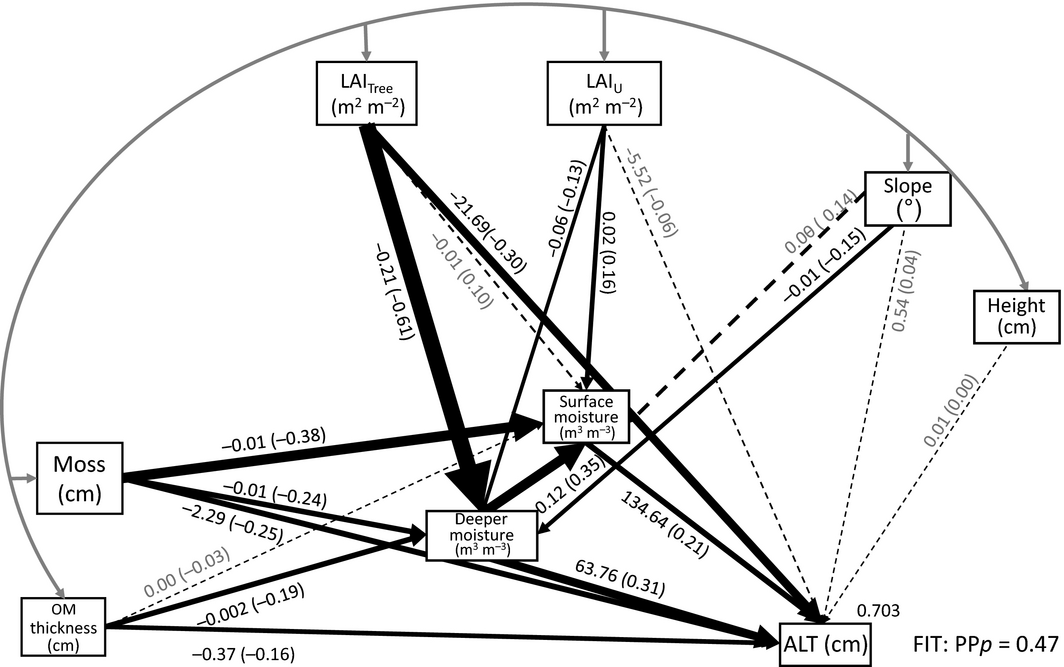
Fisher, J. P., Estop-Aragonés, C., Thierry, A., Charman, D. J., Wolfe, S. A., Hartley, I. P., Murton, J. B., Williams, M. and Phoenix, G. K. (2016), The influence of vegetation and soil characteristics on active-layer thickness of permafrost soils in boreal forest. Glob Change Biol, 22: 3127–3140. doi:10.1111/gcb.13248

Fig.5 Results of Bayesian structural equation model assessing the direct and indirect (soil moisture mediated) impact of vegetation and edaphic characteristics on ALT. Solid lines represent paths where the 95% highest density interval (HDI) for the coefficient did not include zero, whereas dashed lines included zero in the 95% HDI. The unstandardized path coefficient is shown on each path with the standardized coefficient in parentheses, with line thicknesses scaled in proportion to their standardized path coefficient. The curved grey arrow represents the covariance between the exogenous variables which is not displayed here to aid presentation. The overall posterior predictive P value for the model is 0.46 (with values close to 0.5 indicating close agreement with the data) and the model explained 70.5% of the variance in ALT. Convergence was achieved after 5907 iterations (convergence statistic <1.002).
The structural equation model supported our a priori interpretation of the importance of moisture mediation on the impact of the vegetation and edaphic factors measured, and explained 70.5% of the variance in ALT.
Deeper soil moisture, LAITree,, moss layer thickness, surface moisture and OM thickness all had direct effects on ALT (95% highest density interval, HDI), and the standardized path coefficients indicated that the importance of these direct effects was in this order (Fig. 5). Increasing LAITree, moss layer thickness and OM thickness all had negative direct effects on ALT, whereas increasing deeper soil moisture and surface moisture both acted to increase ALT (95% HDI, Fig. 5).




近期评论